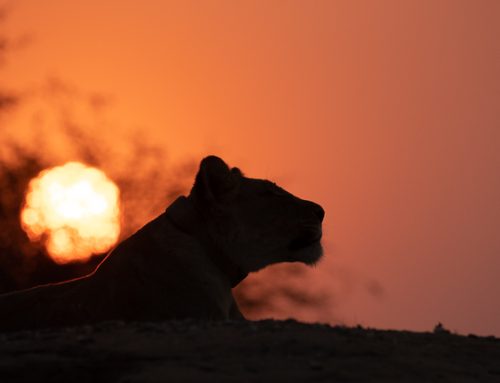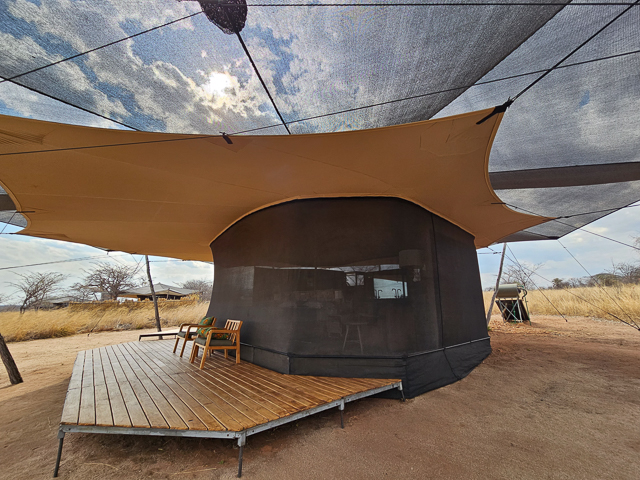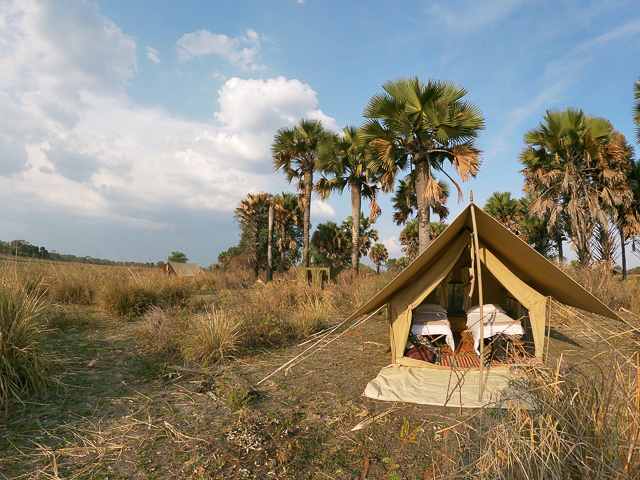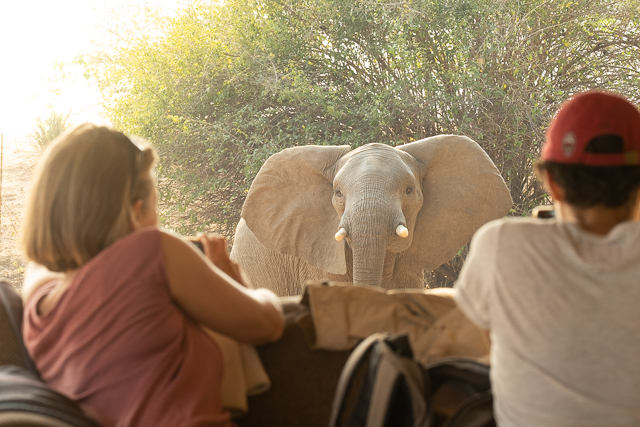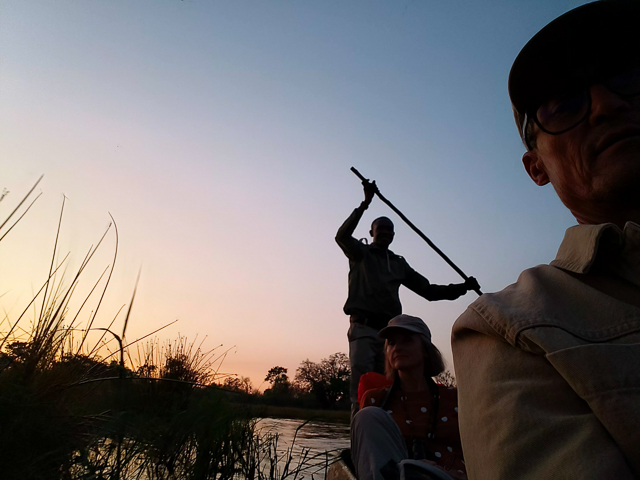We came across a distinctive track in the dust. A large three-toed pad, unique in the African bush. They identify the presence of the only mammal species with three toes on both front and rear feet, the rhinocerous. This mammal is fast disappearing, mainly because of Man´s greed and a ridiculous belief that their horns contain healing powers.
There are only two species in Africa and although they are the same grey colour, they are called the white rhino and the black rhino. Why they are called white and black is really a mystery. The white rhino, being a grazer, has a very wide lip and mouth. The most common reason given for the origin of its name is that it comes from the South African Dutch word wijd meaning wide, which is pronounced like white. Apparently the English then decided that the other one must be black!
The black rhino mainly browses, and has a pointed upper prehensile lip which can curl around and grab leaves. It was one of the five most dangerous animals to hunt and so is one of the “Big Five”. The white rhino is actually bigger, but is generally more docile.
There are many amazing aspects of rhinos, including their thick skin, bizarre horns on their snouts, poor sight, and the story that they stamp out fires (which is a myth) to elaborate on. However, what impresses me about these wonderful beasts is that they have been around for a very long time.
Less than 100 Sumatran rhinos survive today, but they have existed, little changed, since the early Miocene epoch about 20 million years ago (mya). The climate on Earth was a lot warmer then, although the planet looked much the same as today. Nevertheless South and North America were not joined by a land bridge, and much of the eastern Mediterranean and the Arabian Peninsular had not risen and formed. Some modern families of wildlife existed such as plovers, owls and crows, and there were over 100 species of apes, but none of today´s species existed yet.
Two cooler periods in the Miocene (14 mya and 8 mya) were perhaps driven by rapidly decreasing levels of atmospheric carbon dioxide. This resulted in great changes in habitat as water became ice and less moisture was available. As a result grasslands spread, favouring different species. Some species died out and others evolved.
The ancestor of all African rhino species evolved soon afterwards, about 6 mya. This was when the upright walking hominin tribe had diverged from the tribe that evolved into chimpanzees. Black and white rhinos appeared about 1.5 mya in the Pliocene epoch, and have existed little changed since then. This was not long after the Homo line diverged from the Australopithecus line, but still long before modern humans and many other modern mammals existed.
So when I see rhinos in the African bush today, I think of that ancient world when they were still here, along with many extinct species, such as the mammoths, mastodons, woolly rhinos, the strange-looking Silvatherium giraffe relative, sabre-toothed cats and many others. I hope that the demand for rhino horn shrivels, and the pressure is reduced, but I also appreciate even more being able to see them in the wild today.
Justin
Organizations that help the rhino
Many national parks and private reserves in east and southern Africa, some local communities especially in Namibia, Save the Rhino and Save the Rhino Trust (Namibia)




